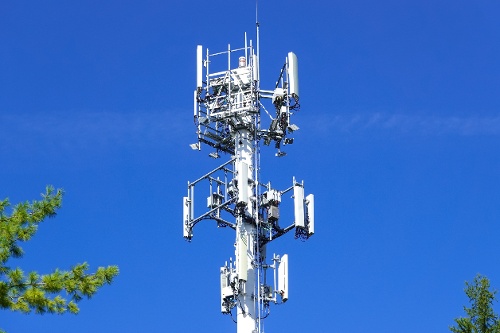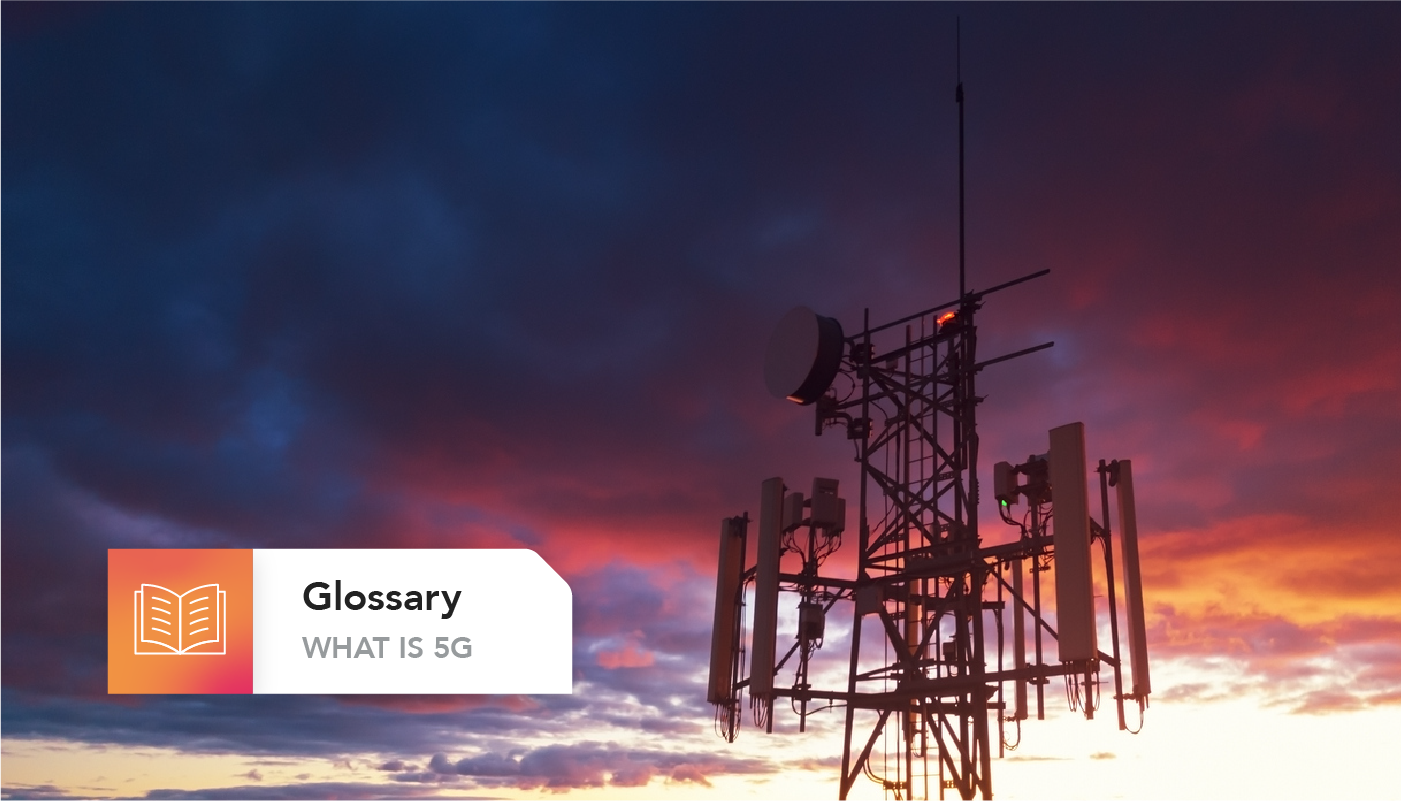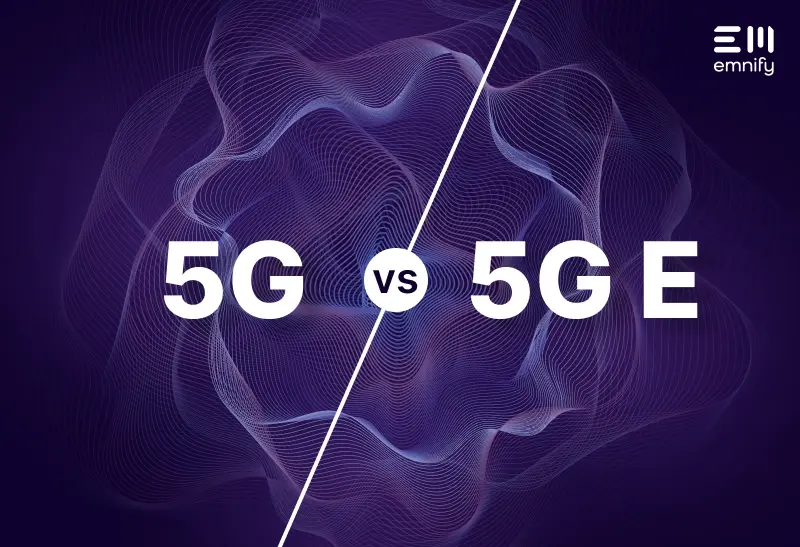

Quick definition: 5G IoT leverages the fifth generation of cellular networks to connect larger concentrations of devices with significantly faster data speeds and lower latency. There are three distinct types of 5G networks, and each has IoT applications. These advanced standards introduce several technologies that allow carriers and MNOs to leverage greater bandwidth and provide better, more versatile connectivity.
What is 5G IoT?
5G IoT uses the most advanced cellular infrastructure and technologies to empower devices with reliable, high-speed data connections. It also introduces solutions to reduce interference, which is particularly important as the number of active IoT devices increases by billions every year.
While 5G is improving speed and service for traditional cellular devices like smartphones, the full 5G standard includes technology specifically for IoT. There are three subsets of 5G standards that prioritize different values, and they each have uses for IoT.
Massive Machine-Type Communication (mMTC) is a specialized Low Power Wide Area Network (LPWAN) standard that prioritizes efficiency. It builds on many of the technologies we see in LTE-M and NB-IoT to provide excellent IoT connectivity while using less power.
Ultra Reliable Low Latency Communication (URLLC) prioritizes reliability and low latency, enabling devices to transmit in nearly real time. This is ideal for applications where transmissions need to happen frequently and where the cost of downtime is extremely high.
Enhanced Mobile Broadband (eMBB) prioritizes data throughput and bandwidth, making it most valuable for video streaming and augmented reality, but there are data-intensive applications for IoT as well.
How is 5G revolutionizing IoT?
The volume of data that urban areas depend on is growing exponentially. As this trend continues, the world will need to use bandwidth more efficiently. And as IoT becomes an increasingly integral part of various industries, reliable real-time connectivity will only become more critical. Here are the main ways 5G is changing IoT.
Faster, more reliable connections
5G networks are many times faster than 4G, and theoretically, 5G can even reach speeds up to 100 times faster than its predecessor. Its average latency is also around 4 milliseconds—about a tenth of 4G’s latency. These data speeds make cellular connectivity viable for more data-intensive use cases and applications that rely on real-time information.
More efficient use of RF spectrum
The Radio Frequency (RF) spectrum has finite bandwidth, and all connected devices have to share it. When too many nearby devices use the same frequency, the signals can interfere with each other. Different types of connectivity use different frequencies, but as the proliferation of connectivity continues and billions more devices need to transmit and receive data each year, signal congestion will become a bigger problem.
5G is helping to address this growing problem by enabling devices to access more of the RF spectrum. While 4G networks can only use bands between 600 MHz and 3 GHz, 5G IoT devices will be able to use bands from under 1 GHz to over 100 GHz.
Imagine the RF spectrum as a shallow, overcrowded swimming pool. As more people (IoT devices and smartphones) try to share this space, there will hardly be room to stand, let alone swim. 5G essentially allows access to a larger, deeper pool, which will have much greater capacity. And while earlier cellular networks can only use licensed bands (like a private pool you can only access with a specific carrier), 5G networks will also enable carriers to use unlicensed bands (public swimming areas), giving them greater flexibility to ensure transmissions get through without interference.
Improved network security
Most IoT devices are extremely vulnerable to cyber attacks. They don’t have enough power or data throughput to encrypt transmissions or authenticate data packets.
5G networks introduce new security mechanisms that make them more secure than other network types, such as the ability to encrypt International Mobile Subscriber Identities (IMSIs), end-to-end encryption of all network traffic, and mutual authentication.
5G IoT use cases
While most IoT applications don’t need that magnitude of data throughput or latency that low, it opens the door to more complex use cases, and will dramatically improve applications that depend on real-time connections and large volumes of data, particularly in industries like healthcare, manufacturing, and transportation.
Medical IoT
Many kinds of medical equipment rely on connectivity and would benefit from better connectivity, but one of 5G’s greatest medical applications is telesurgery. Using Ultra Reliable Low Latency Communication (URLLC), specialized surgeons can make their expertise more accessible to distant hospitals, performing high-stakes surgeries from afar through connected robots and equipment.
Transportation
Latency and connectivity failures have devastating consequences for connected cars. Whether a vehicle is fully autonomous or simply uses IoT to alert drivers, 5G URLLC will reduce reaction times when the vehicle detects a hazard on the roadway or an issue with its own systems.
Since 5G connectivity works well at high speeds, one of the use cases for Enhanced Mobile Broadband (eMBB) is to create more powerful wireless hotspots on public transportation. While this is primarily promoted as a way to improve access to entertainment, it can also provide connectivity to various IoT devices, such as security cameras, hazard sensors, or occupancy analytics sensors.
Unmanned Aerial Vehicles (UAVs)
Drones and various types of UAVs are becoming increasingly popular and versatile. As 5G connectivity becomes more widely available, its high speed, low latency capabilities will reduce costly crashes and other errors.
Smart factories
Modern manufacturers often rely on connected equipment for regular operations, and many Industrial IoT (IIoT) processes will benefit from lower latency and increased reliability and data throughput.
Predictive maintenance sensors, for example, relay information about a piece of equipment’s conditions to an application that analyzes the likelihood of failure. In some cases, those conditions can change rapidly, and operators may need to react quickly to prevent larger problems.
Smart factories may use sensors to monitor and control various equipment on the production floor, where a machine’s actions may trigger a series of synchronized, coordinated operations. Real-time connectivity will improve coordination between connected devices, reducing error rates and improving productivity.
As 5G connectivity becomes more widely available and affordable, its applications for IoT will only continue to grow.
Leverage 5G IoT roaming with EMnify
emnify has provided 5G connectivity for IoT manufacturers since 2020. Our global IoT SIM cards have access to over 540 networks in more than 180 countries, including a growing number of 5G networks.
Talk to an IoT expert to learn more about our 5G coverage, or start a free trial.
Get in touch with our IoT experts
Discover how emnify can help you grow your business and talk to one of our IoT consultants today!

Shannon McCrocklin
Shannon has over seven years of experience communicating with audiences on behalf of businesses. She is passionate about making complex, technical topics easy to understand for readers of all backgrounds.



